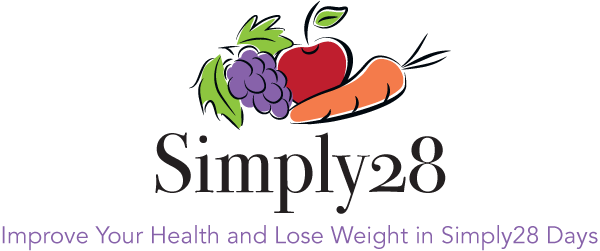If you’ve been following my work for the past few years, you might know my personal story – that losing and maintaining my ideal weight has been a challenge for me for a long time. I remember when I was able to exercise more and cut back on a meal or two and drop 5 pounds in week. But, like many women, that all changed after having my children. Once my second child was born, I continued to gain weight at a rate of about 10 pounds each year. No matter how much dieting and exercise I did I couldn’t seem to get it off and keep it off.
After many attempts and lessons learned, I finally discovered insulin resistance. I learned how insulin production can become dysregulated causing a slowed metabolism and weight gain. It can also lead to serious illnesses like diabetes. I didn’t think I had a problem with sugar or high carbohydrate meals but as it turns out these were the foods that were at the root of the problem.
Losing weight is still a challenge for today, but continuing to gain more and more weight is no longer an issue. I’ve learned that by eating the right foods I was able to stabilize my weight and have more energy without feeling the highs and lows of a sugar burning metabolism. Unexplained feelings of anxiety and mood swings no longer plague me (or my family)! And, I my A1C is in check, a prime indicator that I’m not at risk for diabetes or any other chronic illnesses resulting from high blood sugar levels.
If you’ve been struggling with stubborn weight gain, fatigue, or intense sugar cravings, insulin resistance could be at the root of the problem. It’s an issue affecting millions of people today, often without them even realizing it. Understanding the link between insulin resistance and weight gain is key to unlocking lasting health — and it starts with real food. This is why I created The Ultimate Sugar Detox Cheat Sheet which is a FREE guide to help you ditch the sugar cravings and reclaim your health!
Now let’s dive into what insulin resistance is, why it leads to weight gain, how your food choices play a major role, and how you can reset your metabolism naturally.
What Is Insulin Resistance?
Insulin is a hormone made by your pancreas that helps your cells absorb glucose (sugar) from the bloodstream for energy. When you eat carbohydrates, your blood sugar rises, and insulin is released to help move that sugar into your cells.
Insulin resistance occurs when your cells stop responding properly to insulin. Imagine the “door” to your cells becoming jammed. Even though insulin is trying to let sugar in, the door won’t open easily. As a result, your body compensates by producing even more insulin, leading to chronically high insulin levels — a condition called hyperinsulinemia.
Over time, this imbalance can cause a cascade of health issues, including weight gain, increased fat storage (especially around the belly), inflammation, cravings, and eventually prediabetes or type 2 diabetes.
How Insulin Resistance Leads to Weight Gain
Biologically, your body is wired for survival. When insulin levels are high, your body receives a signal that says, “Store fat!” instead of “Burn fat.” Here’s how it happens:
- Fat Storage Mode: Insulin tells your fat cells to store incoming energy. When insulin is constantly elevated, fat burning gets switched off. Your body holds onto fat stores for “later” — even if you don’t need them.
- Increased Hunger and Cravings: High insulin levels can cause sharp drops in blood sugar after meals, leading to intense hunger, irritability, and cravings for more quick carbs or sugary foods.
- Sluggish Metabolism: Chronic high insulin can slow down your metabolism over time, making it harder to lose weight even if you eat less.
In short, insulin resistance locks your body into a vicious cycle of fat storage, cravings, and energy crashes.
How Food Choices Impact Insulin
Every time you eat, your food choices either help balance your insulin or spike it higher.
- Refined carbohydrates like white bread, pasta, pastries, and sugary drinks cause rapid spikes in blood sugar — followed by big insulin releases.
- Ultra-processed foods — those packaged snacks with lots of additives and hidden sugars — also keep insulin levels high.
- Frequent snacking (even on “healthy” processed snacks) can prevent insulin from ever fully coming down.
On the other hand, real, minimally processed foods — such as vegetables, healthy fats, quality proteins, and low-glycemic fruits — help stabilize blood sugar and keep insulin at healthy levels.
The bottom line: You can either fuel insulin resistance or fuel a fat-burning metabolism.
How to Reset Your Metabolism With Real Food
Good news: Insulin resistance is not a life sentence. Your body is incredibly resilient when given the right tools — and real food is the most powerful tool you have.
Here’s how to start resetting your metabolism naturally:
- Eliminate Processed Sugars and Refined Carbs
The fastest way to lower insulin levels is to remove the main culprits: added sugars, white flour, and processed foods. Focus instead on naturally sweet options like berries or an occasional green apple if needed.
Need help with sugar cravings? Download our FREE Ultimate Sugar Detox Cheat Sheet — it’s packed with simple steps to help you ditch sugar for good!
- Prioritize Real, Nutrient-Dense Foods
Build your meals around:
- Non-starchy vegetables (leafy greens, broccoli, cauliflower)
- Healthy fats (avocados, olive oil, coconut oil, butter)
- Clean proteins (wild-caught fish, pasture-raised chicken, grass-fed beef)
- Low-glycemic fruits (berries, melon)
Real food provides the steady energy your body needs, without the blood sugar rollercoaster.
- Balance Your Meals
Each meal should include protein, healthy fat, and fiber. This trio helps slow the absorption of sugar into your bloodstream, keeping insulin levels stable and helping you feel fuller longer.
Example: Instead of a bagel for breakfast, try scrambled eggs with Italian sausage and berries.
- Space Out Your Meals
Constant snacking keeps insulin levels elevated. Give your body a break by eating balanced meals every 4-5 hours and allowing time for insulin to drop between meals.
- Stay Hydrated
Water plays a crucial role in blood sugar and insulin regulation. Often when we are craving something sweet, our bodies are actually dehydrated. In nature the highest concentration of water tends to be in sweet fruits. If water isn’t accessible, juicy fruits were the next best thing triggering a craving for sweets. Make sure you are getting plenty of water to help remove toxins and hydrate your cells. Aim for at least half your body weight in ounces daily. Add a pinch of sea salt if needed to support mineral balance. Avoid sweetened beverages like sodas, sweet coffee drinks, and even juice that can cause further dehydration.
Break Free From the Cycle
Insulin resistance and weight gain don’t have to control your life. With the right food choices and simple daily habits, you can reset your metabolism, stop sugar cravings, and start feeling like yourself again.
Ready to take your first step?
Download our Ultimate Sugar Detox Cheat Sheet — a completely FREE step-by-step guide to help you stop sugar cravings, stabilize your energy, and start losing weight naturally.




